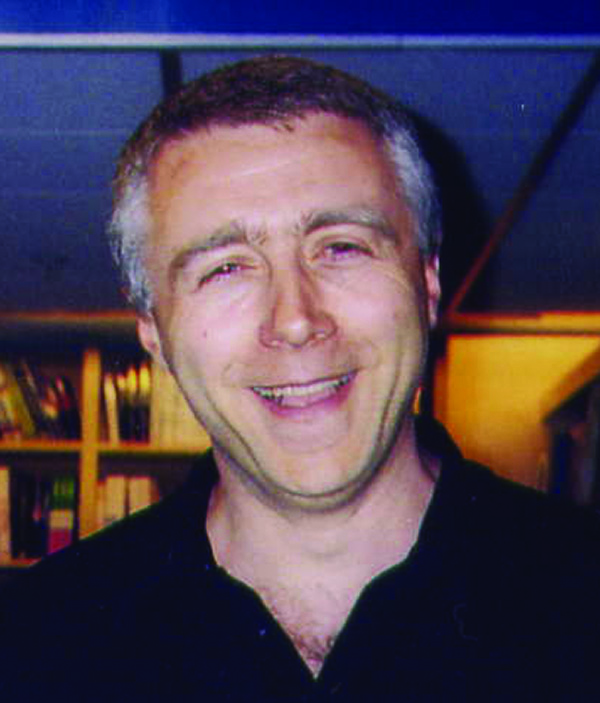In November, physicists using Google’s Sycamore quantum computer in the US carried out a calculation that is equivalent to sending matter through a ‘wormhole’, a shortcut through the fabric of space-time. What this means for physics is a matter of controversy. But the physicists themselves believe they have demonstrated a way to reveal deep connections between two apparently incompatible theories: quantum theory and Einstein’s theory of gravity.
The two theories reign supreme in their own domains: quantum theory in the ultra-small realm of atoms and their constituents, and Einstein’s theory in the ultra-large world of stars and the Universe. However, during the Big Bang, the ultra-large universe was ultra-small. So, if we are ever to understand the origin everything, we need to unite quantum theory and Einstein’s theory of gravity.
The problem is that they appear fundamentally incompatible: Whereas Einstein’s theory is based on certainty - describing, for instance, the exact trajectory of planet through space; quantum theory is based on uncertainty and describes only the chance, or “probability”, of an atom following any of a number of possible paths through space.
Astonishingly, however, physicists have found a tantalising connection between the two theories which hints that, despite their incompatibility, they are merely different faces of the same coin.
In 1997, Prof Juan Maldacena at Princeton’s Institute for Advanced Study discovered that Einstein’s theory in the 3D universe is a kind of holographic projection of quantum theory that lives on the 2D boundary of the Universe. The fly in the ointment is that this duality works only in a Universe with a boundary whereas we live in a Universe which is ever-expanding.
Crucially, for the current work, physicists found there is also a duality between a wormhole and particular computation on a quantum computer. This is a device that can outperform a normal computer because, instead of manipulating bits, which can represent a 0 or a 1, it manipulates quantum bits, or qubits, which can be a 0 and a 1 at the same time. In 2016, Prof Daniel Jafferis, Dr Ping Gao and Dr Aron Wall of Harvard University found a theoretical wormhole that is the dual of a particular computation on a quantum computer.
What makes all this remarkable is that in 1935, Einstein published two papers, not considered to be his greatest and which appeared unconnected even to Einstein. The first, with Nathan Rosen, and known as ER, showed that his theory of gravity permits the existence of wormholes.
The second paper, with Rosen and Boris Podolsky, and known as EPR, showed that subatomic particles born together are forever afterwards connected by a “spooky action at distance”, or ‘entanglement’: when one is disturbed, the other reacts instantaneously, even if on the other side of the Universe. In 2013, Maldacena and Prof Leonard Susskind of Stanford University conjectured that ER = EPR. In other words, subatomic particles can influence each other instantaneously because they are connected by a wormhole.
Now, Jafferis and his colleagues have implemented a quantum computation that is equivalent to sending matter through a wormhole. Achieving this was something of a tour de force because the Sycamore computer, housed at Google Quantum AI in Santa Barbara, California, is terribly limited in capacity - it can manipulate only 54 qubits - and has a large error rate. However, they trained a neural network to dramatically shrink down the number of steps needed in their computation while still preserving its essential character.
The computation produced exactly the signal they expected if it perfectly mimicked the passage of matter through a wormhole. Team member Prof Maria Spiropulu, who worked at the Large Hadron Collider at CERN, near Geneva, says it was as exciting a moment as seeing the signal for the Higgs boson in 2012.
"It is important to understand that experiments of this type are not simulations, but actually involve real phenomena. The wormhole in the laboratory experiment is as real as it would be if it connected two astronomical black holes," says Susskind.
“The attention the experiment has focused on the new paradigm that quantum theory and Einstein’s theory of gravity, when interpreted through the holographic principle, are almost the same thing, will accelerate the paradigm shift.”
What all this means for physics is controversial. Some say it tells us little since the experiment relates to a Universe that is not ours and is anyway only a 1D ‘toy model’. Others says it demonstrates that experiments like this can reveal the connections between quantum theory and Einstein’s theory of gravity and help us to find the elusive theory of quantum gravity that will tell us how the Universe began.
Read more about cosmology:
